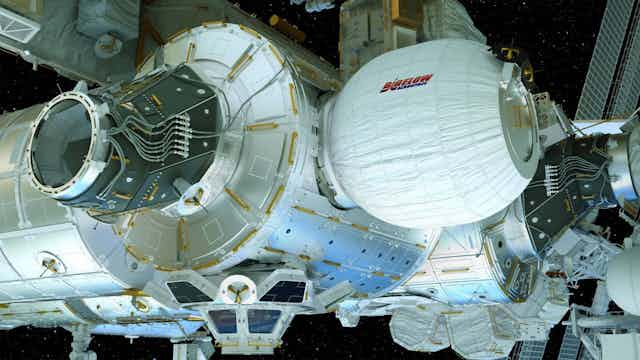The astronauts of the International Space Station welcomed the arrival of what we call the “Bigelow Bungalow”, officially known as the Bigelow Expandable Activity Module (BEAM) on April 10.
If all goes to plan, the station’s robotic arm will install the module later this week. Although, according to NASA’s Kirk Shireman, it won’t be inflated until late in May. BEAM will then remain inflated for a period of two years.
The arrival of the inflatable module is a significant achievement for the future of space habitation and exploration. It is a major achievement for private space enterprises, especially for Bigelow Aerospace, which built the module, and SpaceX, which delivered it.
It is also an extraordinary achievement for public-private partnership, the commercialisation of government-funded research and NASA’s strategy to stimulate the commercialisation of space.
And it shows that the perceived dichotomy of public and private in space is a false one. It certainly looks like the future of space exploration and exploitation lies in these cooperative ventures.
Why an inflatable habitat?
The idea of using inflatable habitats in space is not new. NASA’s first telecommunication satellite, Echo 1, was an inflatable Mylar balloon. And, in the early 1960s NASA developed the concept of an inflatable space habitat.
According to NASA:
[…] unlike many early space station concepts, this design actually made it out of the concept phase and into production, though no models were ever flown.
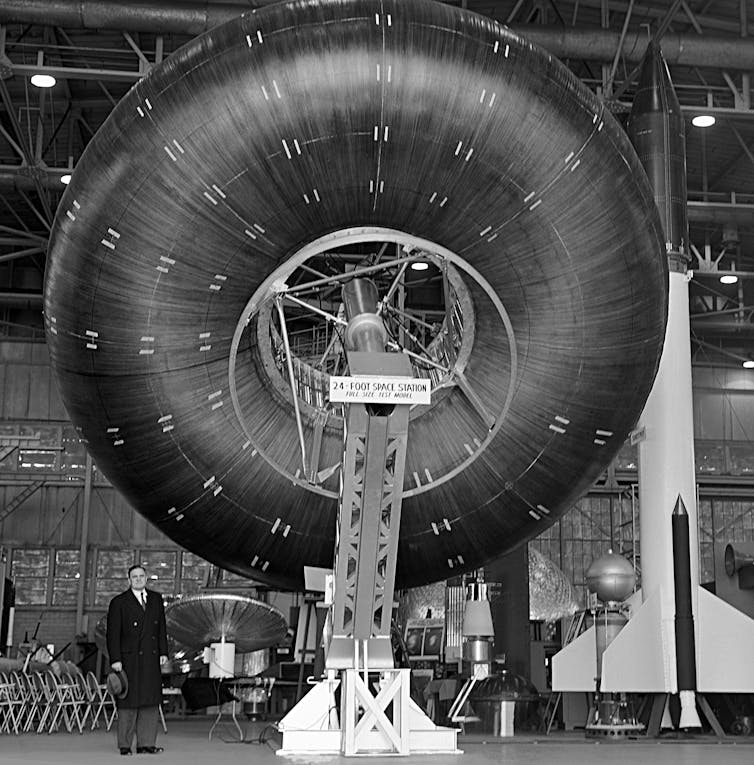
Concepts for inflatable lunar bases were also drawn up, as with this one from 1989, replete with, “a small clean room, a fully equipped life sciences lab, a lunar lander, selenological work, hydroponic gardens, a wardroom, private crew quarters, dust-removing devices for lunar surface work and an airlock”.
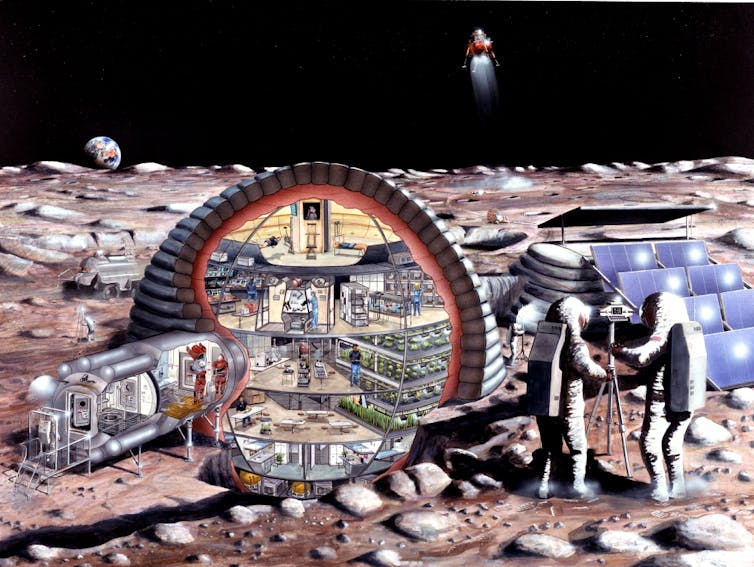
In the 1990s, NASA developed the Transhab concept. Transhab was originally proposed as living quarters for a Mars mission, then developed as a possible crew quarters for the ISS.
However, the program was cancelled in 2000 due to budget constraints. The close resemblance between the Transhab concept and BEAM is no coincidence; Bigelow’s inflatables have evolved directly from Transhub.
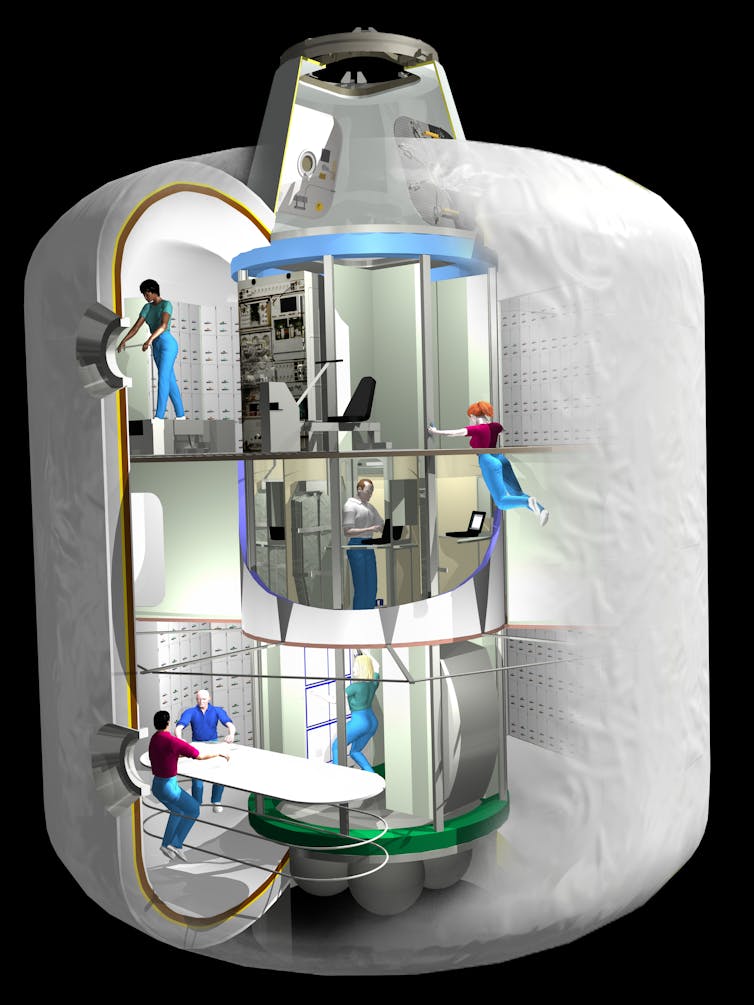
Enter Robert T Bigelow, who made his money in the hotel industry, founded Bigelow Aerospace in 1998. Starting in 2002, NASA and Bigelow entered into the first of a series of Space Act Agreements with NASA. In 2003, Bigelow was licensed the NASA patents related to Transhab expandable habitats.
The company launched its first test modules, Genesis 1 and Genesis 2, aboard a Russian Dnepr rocket in 2006 and 2007. These modules are currently still in orbit and providing invaluable images, videos and data. They were the lowest-cost spacecraft fabrications and launches in aerospace history.
While astronauts aboard the ISS might wish to have the additional space of a new small bedroom approximately four metres long and 3.2 metres wide, the purpose of the installation is entirely experimental. So it will remain empty and uninhabited for the duration its deployment on the ISS.
The primary goal of BEAM’s two-year deployment is to test its safety for future occupation, including radiation protection and the various procedures for delivery and installation.
During the two-year test, it will be monitored for structural integrity, temperature control and resistance to micro-meteoroids and other sources of leaks.
NextSTEP: deep space exploration?
One of NASA’s current strategies “is to stimulate the commercial space industry” through Space Act Agreements and the more recent Next Space Technologies for Exploration Partnerships (NextSTEP) program.
NextSTEP aims to promote public-private partnerships for developing deep-space exploration capabilities, testing them “in around and beyond cislunar space — the space near Earth that extends just beyond the moon”.
Bigelow Aerospace and NASA have signed a NextSTEP contract to develop the B330 Habitat to “support safe, affordable, and robust human spaceflight missions to the Moon, Mars, and beyond”. The B330 habitat will provide a much more spacious habitat than the ISS: 330 cubic metres, hence the name. That is substantially larger than the 160 cubic metre Destiny module of the ISS.
Components for the ISS are currently limited in weight and volume. This is where the inflatable habitats provide a scalable future for extraterrestrial habitation, providing they pass safety and durability requirements. Their volume and shape will not be restricted by the launch capabilities of the available rockets.
David Parker Brown at Airline Reporter has some great photos of a walk through of a B330 mock-up here. The direct evolution from NASA’s Transhab is clearly apparent in the B330’s structure.
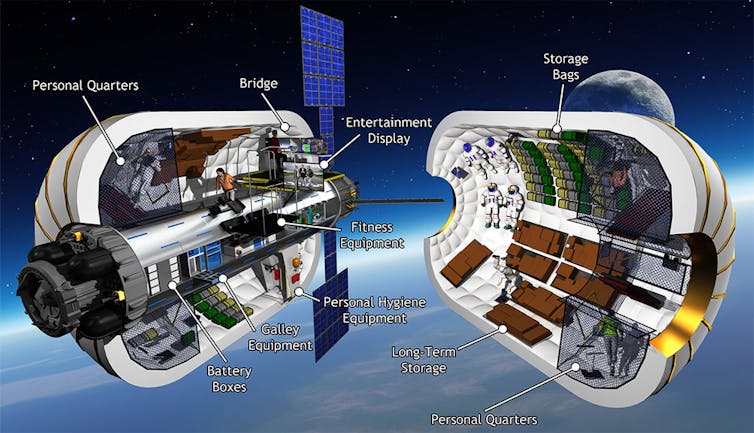
On April 11, just a day after BEAM was delivered to the ISS, Bigelow Aerospace and United Launch Alliance announced a partnership to launch two B330 habitats. The plan is for the first module to be launched in 2019 and the second in 2020. The modules will provide the first commercial space habitat research facilities in orbit.
However, according to Robert Bigelow,:
We are exploring options for the location of the initial B330 including discussions with NASA on the possibility of attaching it to the International Space Station (ISS).
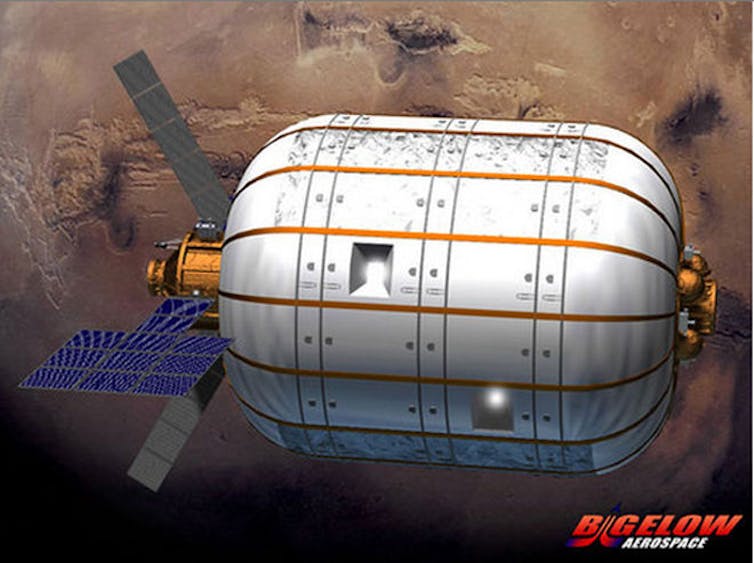
And, while the B330 stations will initially be tested in low-Earth orbit, one strategic long-term goal is clearly to use these modules to support deep-space missions to the moon and Mars.
Of course, commercial entities also want to turn a profit. And NASA is offering a helping hand through programs like Startup NASA. But the permissible commercial uses of space, and the future of space utilisation and exploitation are going to need active international political dialogue about what the Outer Space Treaty had declared the “province of mankind”.
In the meantime, I’m sure many of us would settle for a visit to a “Bigelow Bungalow” in low-Earth orbit, where we could happily sip champagne from a tube and enjoy a not-so-very-private room with a view.

